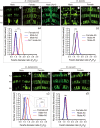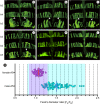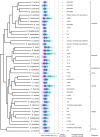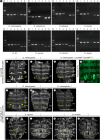Evolution of a neuromuscular sexual dimorphism in the Drosophila montium species group
- PMID: 34315982
- PMCID: PMC8316392
- DOI: 10.1038/s41598-021-94722-3
Evolution of a neuromuscular sexual dimorphism in the Drosophila montium species group
Abstract
While epigamic traits likely evolve via sexual selection, the mechanism whereby internal sexual dimorphism arises remains less well understood. Seeking clues as to how the internal sexual dimorphism evolved, we compared the abdominal musculature of 41 Drosophila montium group species, to determine whether any of these species carry a male-specific muscle of Lawrence (MOL). Our quantitative analysis revealed that the size of a sexually dimorphic MOL analog found in 19 montium group species varied widely from species to species, suggesting the gradual evolution of this sexually dimorphic neuromuscular trait. We attempted the ancestral state reconstitution for the presence or absence of the neuromuscular sexual dimorphism in the A5 segment; the neuromuscular sexual dimorphism existed in an old ancestor of the montium group, which was lost in some of the most recent common ancestors of derived lineages, and subsequently some species regained it. This loss-and-gain history was not shared by evolutionary changes in the courtship song pattern, even though both traits were commonly regulated by the master regulator male-determinant protein FruM. It is envisaged that different sets of FruM target genes may serve for shaping the song and MOL characteristics, respectively, and, as a consequence, each phenotypic trait underwent a distinct evolutionary path.
© 2021. The Author(s).
Conflict of interest statement
The authors declare no competing interests.
Figures






References
-
- Darwin C. The Decent of Man, and Selection in Relation to Sex. 2. D. Appleton and Company; 1889.
-
- Carroll SB. Endless Forms Most Beautiful: The New Science of Evo Devo. W.W. Norton & Company; 2005.
-
- Toda, M. J. DrosWLD a Database on Taxonomy of Drosophilidaehttps://bioinfo.museum.hokudai.ac.jp/db/modules/stdb/index.php?start=0&p... (2021).
Publication types
MeSH terms
LinkOut - more resources
Full Text Sources
Molecular Biology Databases

